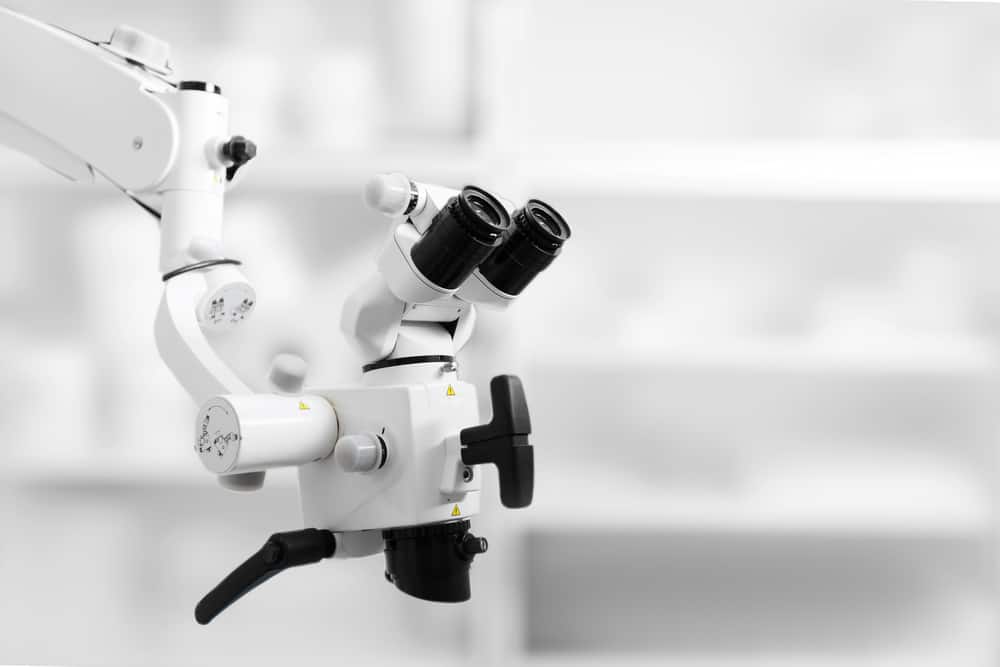
If you’ve ever put your eyes on a pair of binoculars, you likely have a pretty good idea of what a binocular microscope looks like. These scientific instruments have been utilized worldwide. They are now the most common kind of microscope you can expect to find in classrooms, research labs, and other areas where scientific processes are conducted. This article aims to break down binocular microscopes, what defines them, their various uses, and their limitations. We hope this article proves to be informative and entertaining for you – let’s get into it!
The major benefit of using a binocular microscope is that it can reduce users’ eye strain over time. Using a microscope with only one eyepiece can cause headaches, undue eye, and muscular strain. Over time, this can lead to vision deterioration and other problems. Binocular microscopes are just more comfortable to use, making them highly desirable to anyone who needs to be looking at magnified versions of objects.
Contents
Breaking Down the Binocular Microscope
The most popular microscope type in the world by a large margin, binocular microscopes have two eyepieces instead of only one. This is the only difference between them and a traditional monocular microscope.
They are slightly more expensive than a monocular microscope because of the extra material costs. In many countries, this slight additional charge is inconsequential. The comfort and ease of viewing a subject, sample, or specimen through two eyepieces instead of one make binocular microscopes more than worth the cost.
While some proponents of binocular microscopes have claimed that the instruments help provide users with more depth perception, this claim has been challenged and somewhat debunked over time. The truth is that binocular microscopes don’t help in this regard – they still give users a flat image of the magnified sample. However, due to an optical illusion, users may attribute more depth perception to the images they are viewing. You can utilize a binocular stereo microscope to overlay two 2D images and turn them into a 3D image – this can be highly useful depending on your research.

Types of Binocular Microscopes
There are a few different binocular microscopes, including student, research, and benchtop microscopes. These can vary in cost and start anywhere from a couple of hundred dollars before going up to multiple thousands of dollars. The 1220 cm binocular microscope is an example of a powerful binocular microscope that can get pricey quickly.
Compound binocular microscopes are one kind that scientists and researchers commonly use. It has many components that make users’ lives easier to bear, including the two eyepieces mentioned above. Even if these don’t give more depth perception, they still deliver more comfort. It is arguably much more natural to put both eyes into eyepieces instead of divvying up your vision with one eyepiece.
Your average compound microscope is a nice middle ground for most individuals looking for a quality microscope. They hit a median in price while still delivering high-quality magnification. Performance is an essential part of any scientific instrument – especially microscopes.
Your average binocular microscope will have the capacity to hold up to four objective lenses. The magnification strength of these lenses will vary from 40x to 100x, but they usually won’t go higher than that. However, suppose this limited magnification strength is a problem. In that case, users might be able to equip condensers, such as the Abbe condenser, which allows for narrowing the lenses to give more visibility and magnification.
Practical Uses for Binocular Microscopes
Your average person can find plenty of things to do with a binocular microscope, the most popular being simply looking at stuff! Binocular microscopes can usually let you see something over 100x closer than you’d typically be able to, allowing you to see anything in much more pronounced detail. However, if you’re interested in the real-world applications of a binocular microscope, let us get off the tangent of just how fun playing around with a microscope can be.
Binocular microscopes are commonly found in science classrooms worldwide, allowing students to see the small parts of the world up close. They can help identify small organisms, dead skin, hair, and other objects that can be useful to examine scientifically. While no one is performing any genetic research with your average binocular microscope, they are still handy for introducing regular people to the world of science.
Industries commonly using binocular microscopes include education, criminal justice, botany, medicine, and biology. While it might sound overly simplistic, imagine any occasion you would want to see something tiny up close – an unidentified insect, an unfamiliar leaf, a hair – there are a million examples you could think up for yourself.

Use a Binocular Microscope For Yourself
While you’ve likely used a binocular microscope at some point in your life, we would love to encourage you to get out there and try one out for yourself. These tools have integrated into all corners of our lives and are easy to find and use.
Now that you know a little more about what they are and how they work, maybe you’ll want to get involved in examining your world a little more. Plus, now that you know the risk of eye strain is severely limited when using a binocular microscope, you might feel more encouraged to start taking an in-depth view of things around you. We hope you found this article informative and interesting, and hopefully, you’ll start taking a more active approach to the science you encounter in your life.

